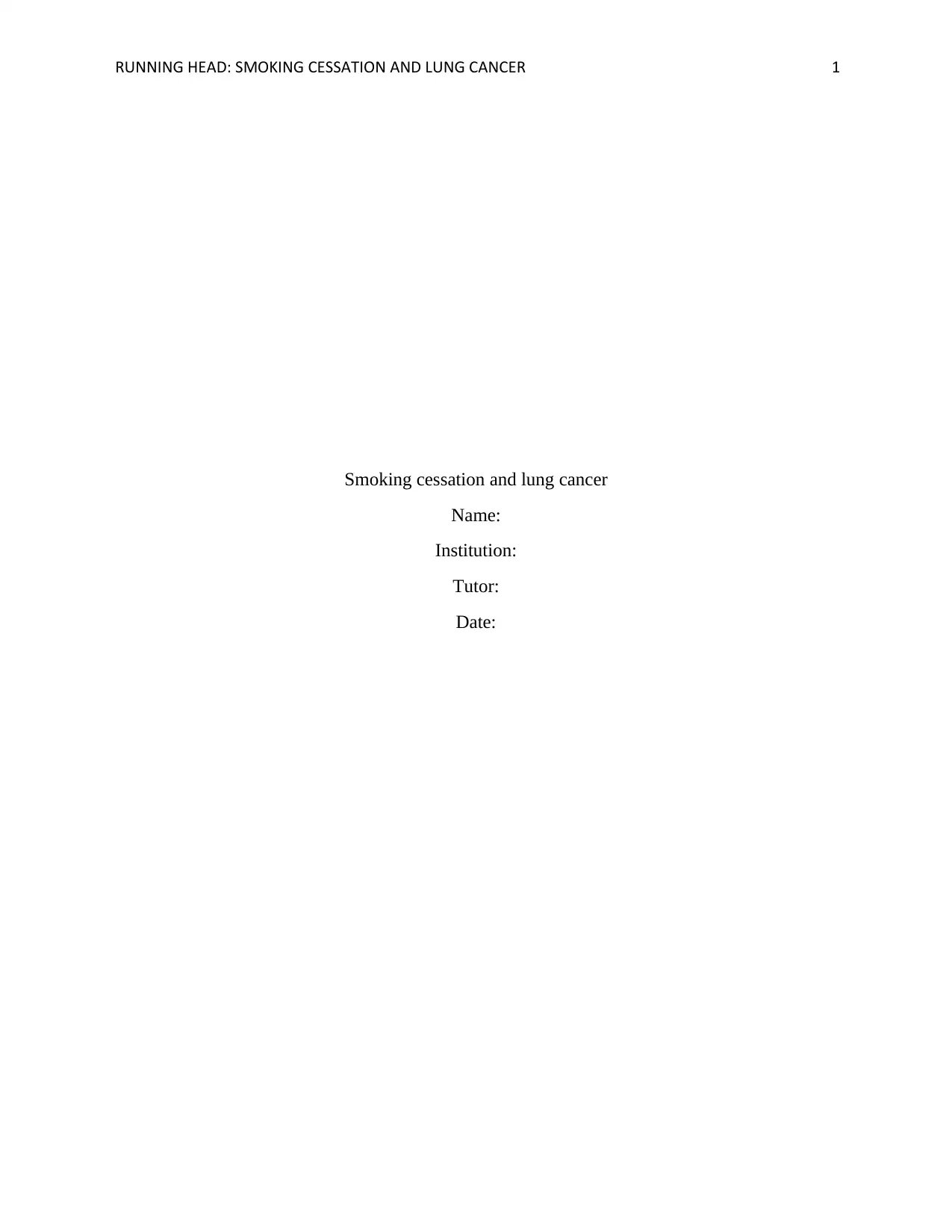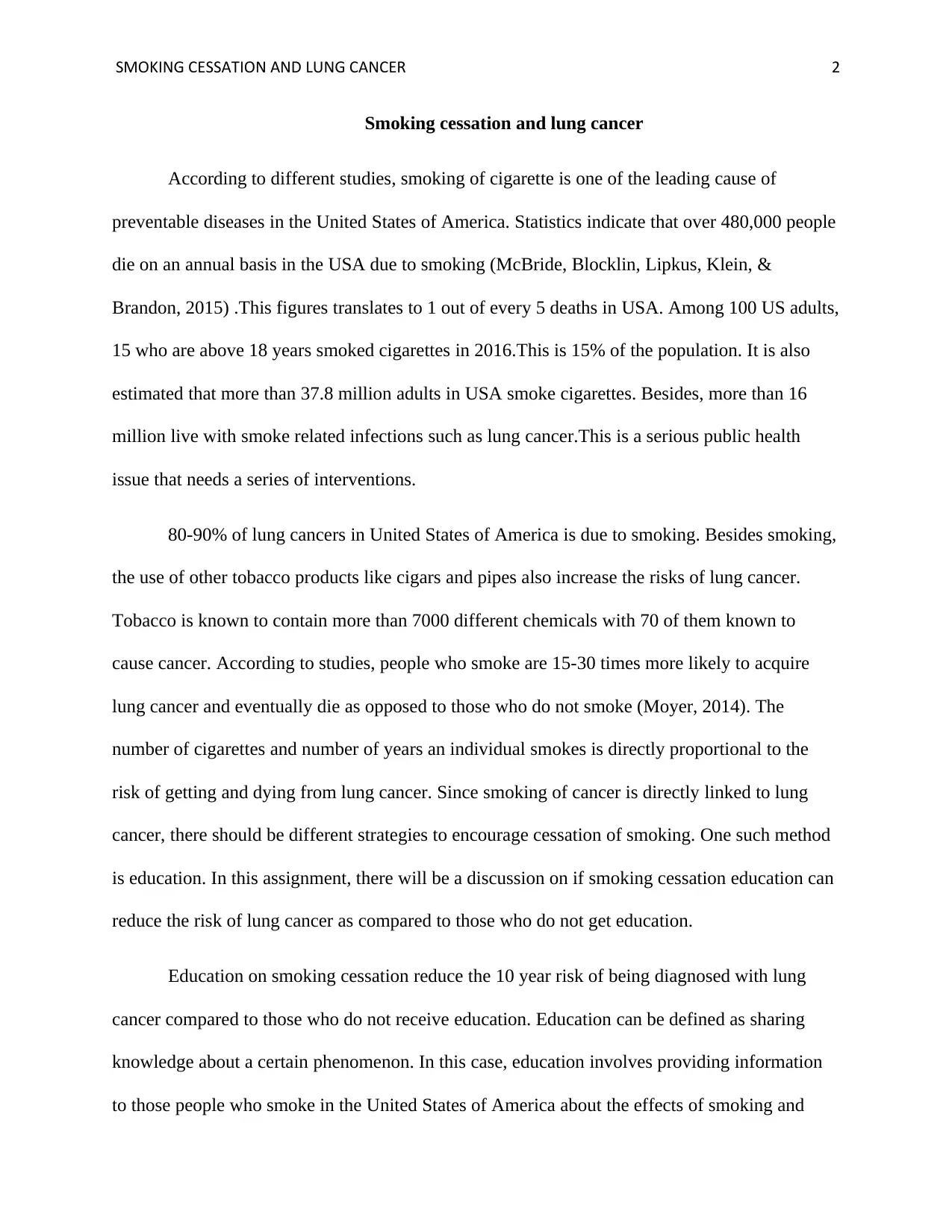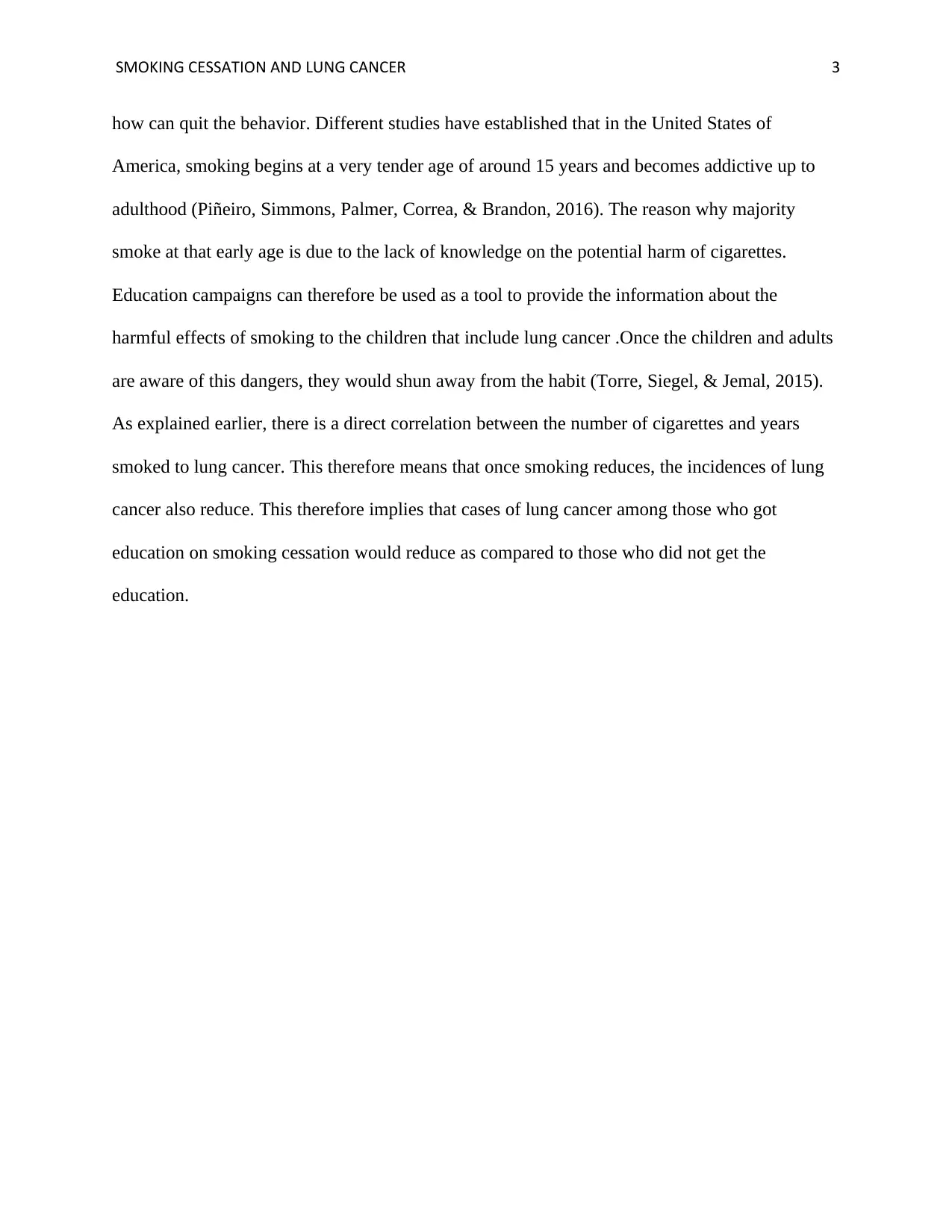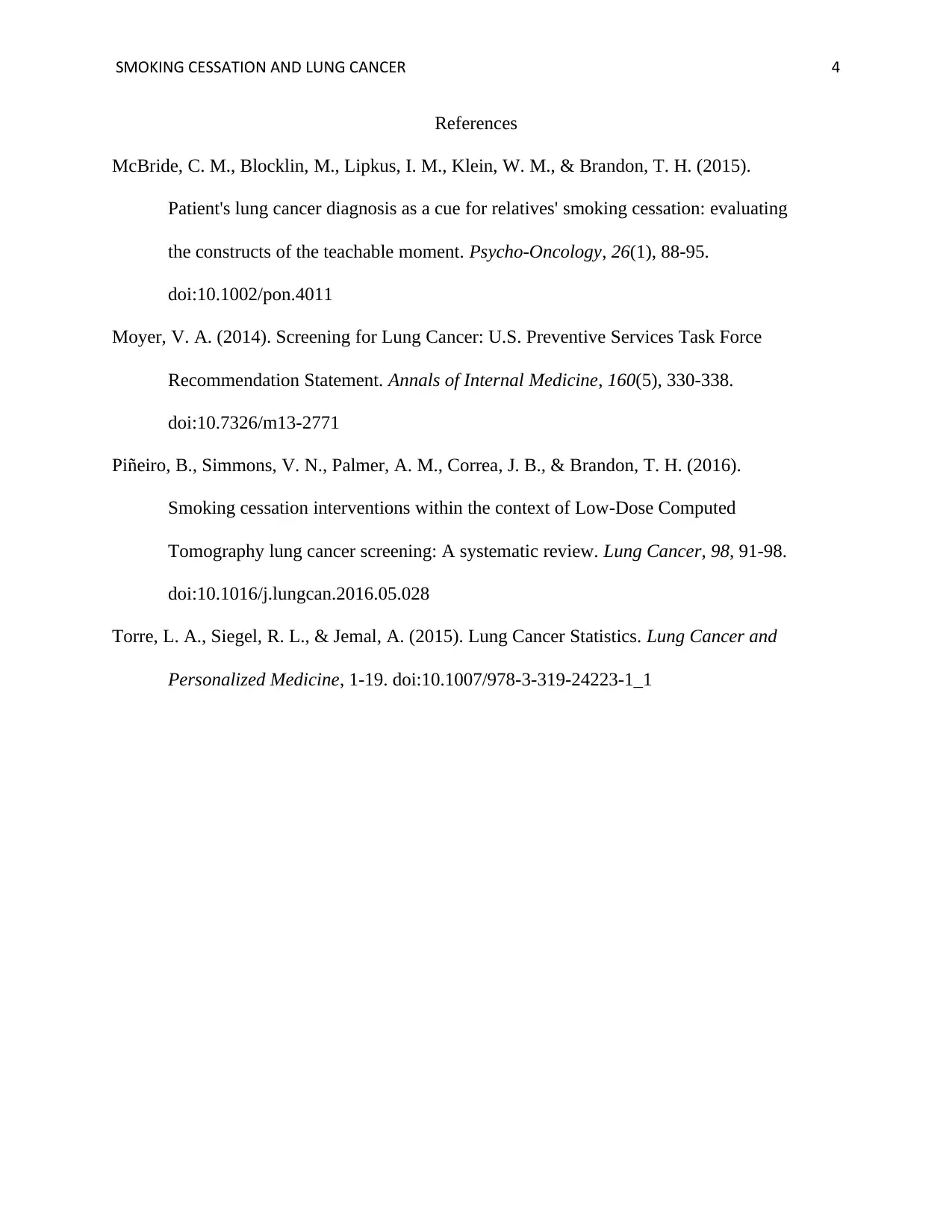Smoking Cessation Education's Role in Reducing Lung Cancer Risk
VerifiedAdded on 2023/06/05
|4
|784
|468
Essay
AI Summary
This essay examines the relationship between smoking cessation and lung cancer, highlighting the significant public health issue posed by smoking in the United States. The essay presents statistics on smoking prevalence, mortality rates, and the causal link between smoking and lung cancer. It emphasizes that 80-90% of lung cancers are due to smoking. The core argument revolves around the effectiveness of smoking cessation education in reducing the risk of lung cancer. The essay defines education as the dissemination of knowledge about the effects of smoking and methods for quitting, emphasizing the importance of early education to prevent initiation of smoking habits. The essay posits that education campaigns can effectively provide information about the harmful effects of smoking to children and adults, leading to reduced smoking rates and, consequently, lower incidences of lung cancer. It concludes that education on smoking cessation reduces the 10-year risk of being diagnosed with lung cancer compared to those who do not receive education.
1 out of 4











![[object Object]](/_next/static/media/star-bottom.7253800d.svg)